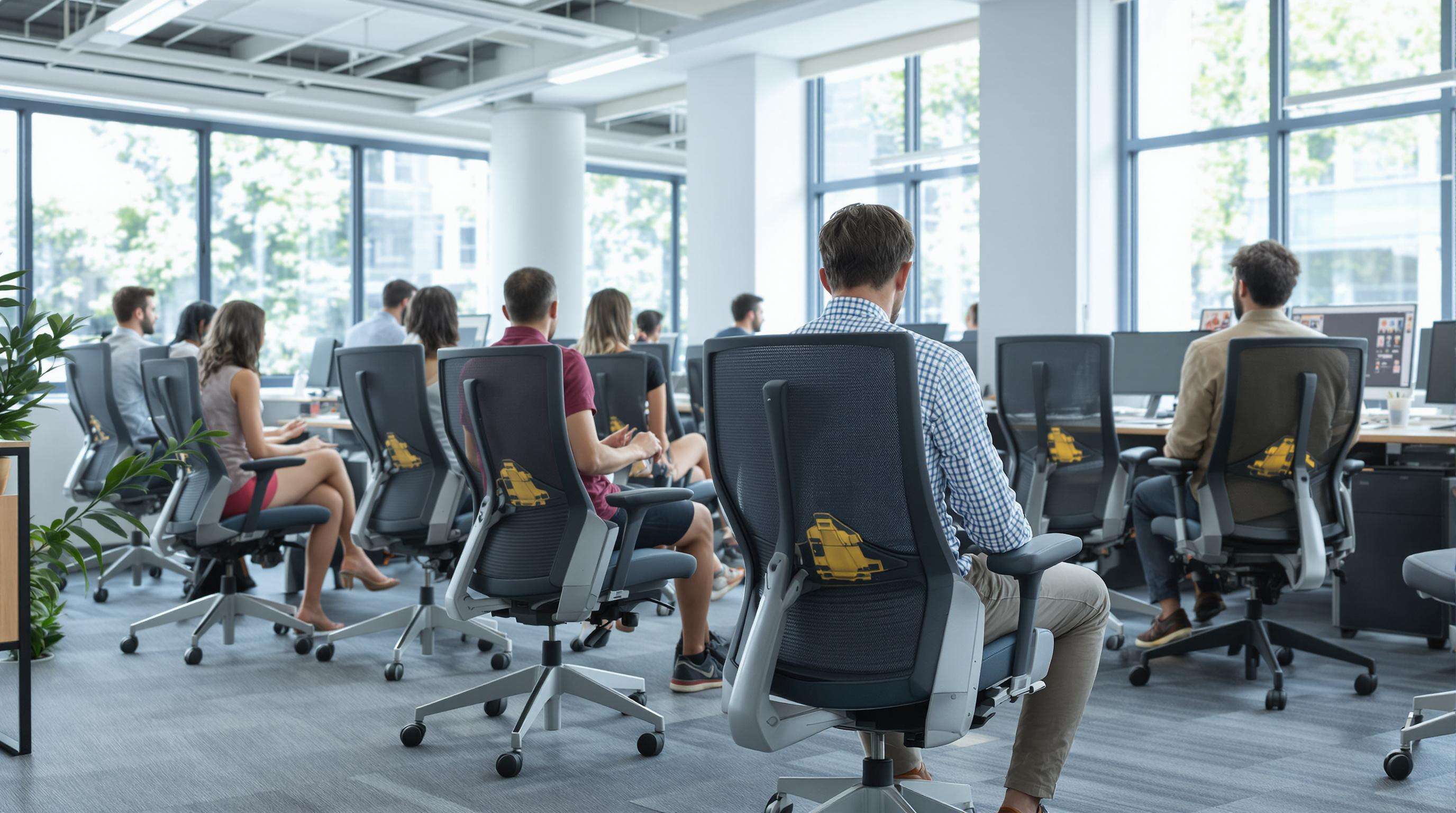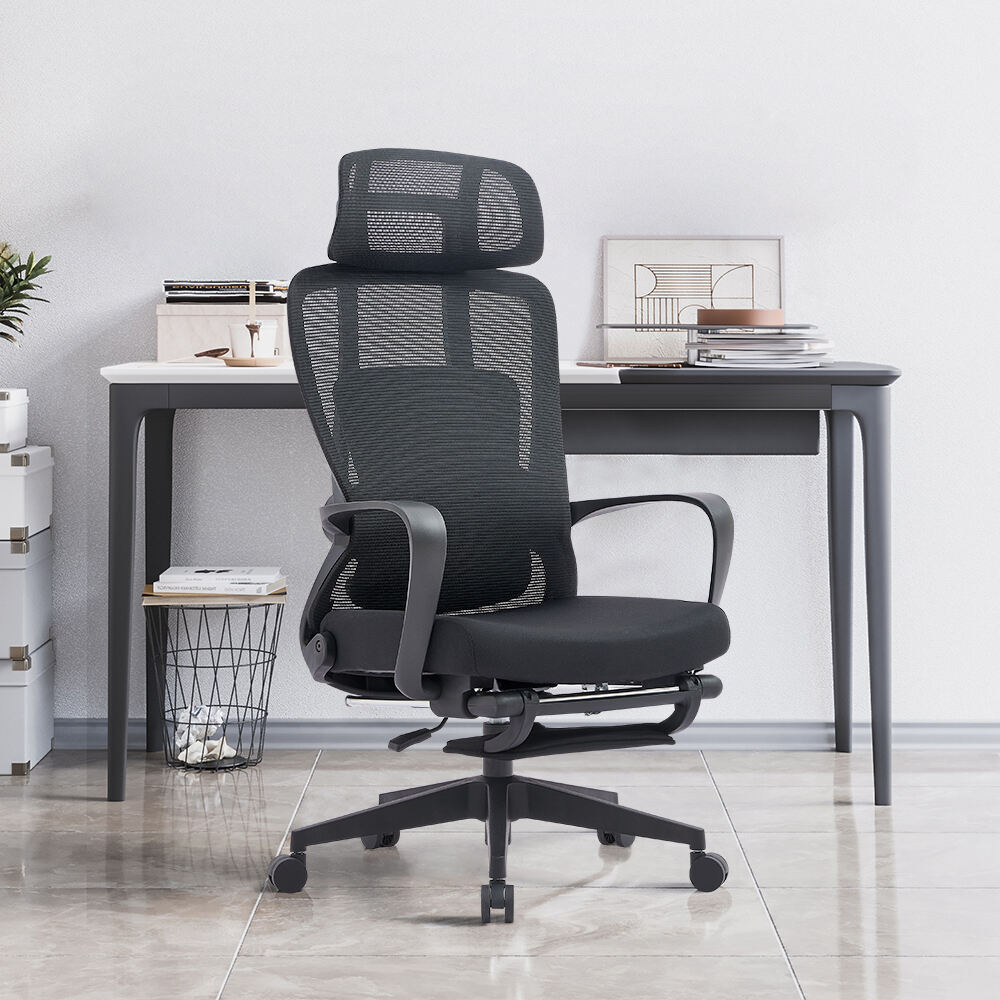How to contact us NOW? +86-18924894842 [email protected]
company information
No.237-258, Floor 2, Building C, GuangFoYiHao MeizhenVillage, Jiujiang Town, Nanhai district, Foshan City, Guangdong, China
Telephone:+86-18924894842
How to contact us NOW? +86-18924894842 [email protected]
Office chairs that carry certification need to pass pretty strict tests when it comes to how they support the body and stay safe during regular use. There are several international standards out there that manufacturers have to follow. The European standard is called EN 1335, while in America they look at ANSI/BIFMA X5.1 and across the pond in Britain, BS 5459:2000 applies. These standards check things like how long the chair will last, what adjustments it offers, and whether it actually helps maintain good posture. To get certified, parts such as wheels and hydraulic mechanisms go through an incredible number of stress tests - around 120 thousand cycles to be exact. Take EN 1335 as an example. This particular standard requires that seats can adjust in depth from 380 to 480 millimeters. Workplace research has shown this kind of adjustment makes a real difference, cutting down on back and muscle problems by about one third according to some studies.
While all three standards prioritize user safety, their regional focus varies:
| Standard | Key Requirements | Regional Adoption |
|---|---|---|
| BS 5459 | Static load testing up to 1,100 N | UK public sector |
| EN 1335 | 5-point base stability & tilt-lock mechanisms | EU-wide |
| ANSI/BIFMA | 125 kg dynamic load capacity | North America |
BS 5459 emphasizes flammability resistance—critical for public institutions—while ANSI/BIFMA X5.1 evaluates stability under extreme forces. EN 1335 also requires a minimum 14° tilt angle to support neutral spinal alignment during recline.
Australia has its own set of guidelines called AS/NZS 4438 when it comes to ergonomics basics. These include things like adjustable seat heights ranging from about 430 to 535 millimeters and proper lumbar support depth of at least 40 mm. When office chairs go beyond what these standards require, they can get something special called the AFRDI Level 6 Blue Tick Certification. Getting this certification means manufacturers must offer a warranty lasting ten years for commercial use and test their chairs with people weighing up to around 135 kilograms. Recent studies done in workplaces back in 2023 showed interesting results too. Companies that had invested in these certified chairs saw roughly 27 percent fewer cases of lower back injuries compared to businesses still using regular chairs without any such certification.

Office chairs that have proper certification help cut down on muscle and bone strain because they follow proven ergonomic principles. When manufacturers meet standards like ANSI/BIFMA or EN 1335, their products go through thorough tests looking at things like how well the chair supports the lower back, whether the seat depth can be adjusted properly, and how evenly weight gets distributed across the seating surface. These are really important aspects when trying to prevent ongoing back and neck issues. Research published last year showed workers sitting in certified chairs had about 60% less frequent complaints about chronic lower back problems than people who used regular office chairs instead. The way these certified models spread out body weight makes a big difference too. They take pressure off joints and generally make it less likely someone will develop those annoying repetitive stress injuries we all hear so much about nowadays.
Chairs that are properly certified help keep the spine in its natural S shape, which can cut down on disc pressure by around 40 percent over the course of an eight hour work day according to research published in the Journal of Occupational Ergonomics back in 2023. The adjustable support in the lower back area works for all sorts of body shapes and sizes, stopping people from leaning forward like they often do when sitting in regular office chairs. Studies have found that folks who regularly sit in these certified models tend to stand better after just about six weeks of daily use, showing improved posture stability at roughly a 34% improvement rate.
High-density foam and breathable materials in certified chairs reduce heat buildup by 28%, enhancing sitting tolerance. A 2024 meta-analysis of 12,000 office workers found a 19% drop in mid-shift discomfort when using chairs meeting AFRDI Level 6 durability standards. Dynamic tilt mechanisms encourage micro-movements, supporting blood circulation without disrupting work.

Chairs that carry certification usually come with around 14 adjustment options or more. Think about things like seat height ranging from roughly 42 to 53 centimeters, seat depth between 38 and 45 cm, adjustable lumbar support, plus those fancy 4D armrests that move independently. All these adjustments need to meet certain standards too. The ANSI/BIFMA X5.1 standard actually demands rigorous testing where components must withstand about 120 thousand cycles of use for recline tension mechanisms and tilt locks. A top rated chair mentioned in recent ergonomic studies can handle weights up to 400 pounds and boasts a solid 12 year warranty according to Forbes report from last year. This kind of robust construction combined with all those adjustment possibilities really makes certified chairs stand out when considering their usefulness over many years of daily sitting.
Independent ergonomists validate chair designs through 120-hour human trials, assessing pressure distribution, posture alignment, and muscle fatigue. Their input ensures lumbar supports adapt to spinal curves within 15°—30° of the natural S-shape—features often missing in non-certified chairs.
Only 23% of self-labeled “ergonomic” chairs meet international certification benchmarks, according to a 2023 workplace safety audit. Certified models undergo third-party verification for pelvic stabilization and dynamic recline, while uncertified options frequently use non-breathable foam or lack adjustable seat depth—factors that contribute to long-term musculoskeletal strain.
Environmental Product Declarations (EPDs) along with GREENGUARD Gold certifications set pretty high bars when it comes to making office furniture sustainable. An EPD basically tracks how bad something is for the environment from production all the way to disposal, which makes companies show their cards instead of hiding behind vague claims. The GREENGUARD Gold standard goes even further by putting real restrictions on those nasty VOCs we don't want floating around our offices. Some studies suggest this cuts down on harmful chemicals in the air by about half compared to regular furniture. Plus, many of these certified chairs use materials that can actually be recycled later on, so they help keep waste out of landfills while making workplaces healthier for everyone who sits in them day after day.
Chairs with sustainability certifications help keep workers healthy since they cut down on volatile organic compounds that can cause headaches and breathing problems. When companies choose furniture with EPD or GREENGUARD Gold labels, it shows they care about standards such as LEED and the WELL Building Standard. These days, around two thirds of staff members want workplaces that go green. Getting certified office gear not only makes the company look better in the eyes of clients and customers but also helps meet those ESG goals related to environment, social responsibility, and good governance practices.
When it comes to office furniture, certified chairs really do set the bar for quality control and protecting business investments. The independent testing these certifications involve actually checks both how strong the chair is built and whether it supports proper posture. According to some research published last year by Facility Management Journal, companies that went with certified seating saw around a third less spending overall after five years than those who bought cheaper options without certification. Why? Well, there's just not as many breakdowns needing fixing, they tend to last much longer, and employees generally get more work done when sitting comfortably all day long.
Chairs meeting ANSI/BIFMA or AFRDI standards endure 200,000+ cycle tests for casters and gas lifts—far beyond typical commercial requirements. A 2023 ergonomic study found certified models needed 40% fewer repairs in their first three years. Organizations using these chairs report 60% longer replacement cycles, significantly reducing capital spending.
A Sydney-based tech firm saw a 19% increase in task focus and a 27% drop in posture-related absenteeism after switching to AFRDI Level 6-certified seating (Ergonomics Australia 2022). Employees gained an average of 2.3 additional productive hours weekly due to reduced discomfort, demonstrating the ROI of certified ergonomic seating in knowledge-based workplaces.
According to Grand View Research from 2023, roughly three out of four facility managers are starting to look at dual certifications such as GREENGUARD Gold before buying new office furniture these days. Facility professionals seem to be realizing something important - when companies invest in sustainable chairs that have proper certification, employees tend to be about 18 percent happier overall, plus it helps tick off those ESG boxes corporations love so much. Looking ahead, experts predict the worldwide market for genuinely verified ergonomic office furniture will expand at around 9.8% compound annual growth rate until 2030. This isn't just about numbers though; many workplaces are actively promoting wellness programs now, which naturally leads them toward better quality seating solutions.
Office chair certifications are crucial as they ensure the chair meets specific safety, ergonomic, and environmental standards, providing proper support, reducing the likelihood of musculoskeletal issues, and contributing to a sustainable workplace environment.
Certified ergonomic chairs provide numerous benefits including improved posture alignment, reduced risk of musculoskeletal disorders, enhanced comfort during prolonged sitting, and better air quality and sustainability due to eco-conscious materials.
Certifications impact the total cost of ownership by enhancing durability and reducing the need for frequent repairs. Companies invest less in replacements and maintenance, leading to lower overall spending over time.